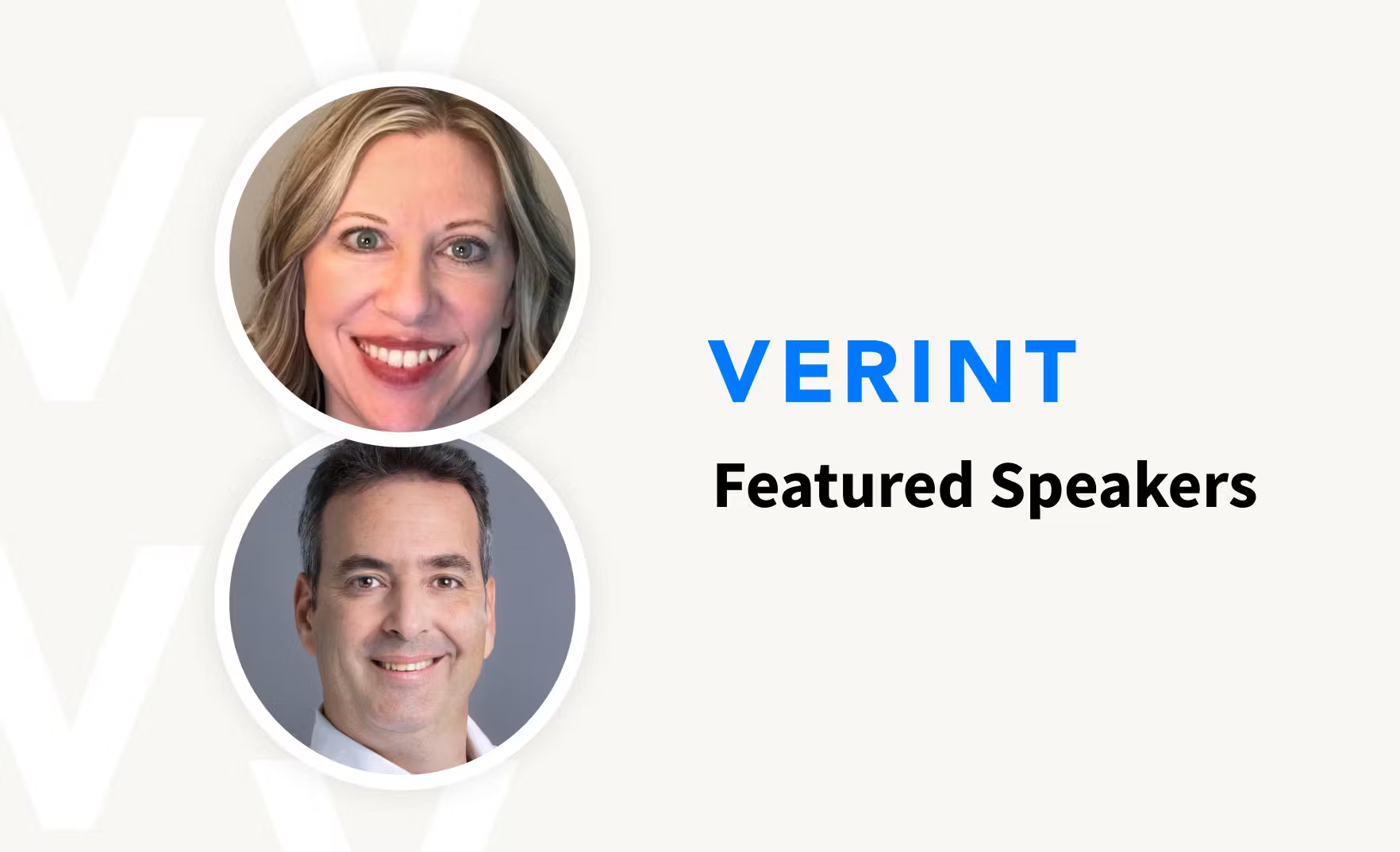
Open CCaaS™ and the Conversational Cloud for CX


It’s the ultimate one-two punch. Conversational AI, combined with the “move to The Cloud” lays waste to “silos” that have long fragmented enterprise IT infrastructure. There are no longer bright lines between contact centers, collaboration platforms, application marketplaces, and the data repositories that individually inform them. The terms “CCaaS”, “UCaaS” and “CPaaS” are rendered passé (or is it PaaSé?).
Thanks to development efforts and mega-investments from the likes of Amazon Web Services, Microsoft, Google, Oracle, and others, enterprises now consume computing power and storage capacity as required for their specific use cases on a subscription basis.
Verint took this new reality to heart when it repositioned its foundational product offerings as “the only Open CCaaS Platform” (OpenCCaaS™) in June 2023. The new branding raised eyebrows, at first, because the term “CCaaS” had a very specific meaning for most people. It evolved from hosted call centers, which were employed to outsource the handling of voice calls by remote customer service agents.
Their Automated Call Directors (ACDs) routed calls to rooms full of agent workstations. Over the years, the traditional CCaaS providers added adjacent capabilities like intelligent routing, multichannel capabilities, call recording, and workforce management.
Treating call handling as a commodity, Verint offers no “native” ACD. Instead, Open CCaaS conforms to CEO Dan Bodner’s maxim that: “To be truly open, you must be open to all solutions and dimensions.” For Verint customers and prospects, that distills into three options:
- Keep your existing telephony: If your current ACD ain’t broke, don’t fix it. There is no need to replace.
- Buy cloud telephony from Verint. Keep all resources under one contract.
- BYOT (Bring Your Own Telephony): Pursue your own path to the Conversational Cloud and bring any telephony from any other vendor, including its choice of call routing.
This approach provides unprecedented openness and freedom of choice to customers while running seamlessly as part of Verint Platform.
What We Have Here Is a Prime Example of The Conversational Cloud
In 2013, Opus Research coined the term “Conversational Cloud” to describe service offerings from established hyperscalers Salesforce, AWS, Google Cloud, Microsoft, and Oracle. They responded to demand from enterprises decision-makers with the confidence to run mission-critical business processes and store data in remote server farms.
They spawned a ripple effect that, even at that early date, had an impact on customer care and self-service strategies where solutions could leverage Big Data, predictive analytics, machine learning and natural language understanding to foster simple, speedy task completion and customer empowerment. Many of these solutions held fundamental capabilities that established the building blocks of the Conversational Cloud.
The Four Pillars of the Conversational Cloud
- Self-Service: A conversation often starts as self-service, on a website or mobile device through a chatbot, voicebot, or a speech-enabled interactive voice response (IVR) system.
- Interaction Processing/Routing: Starts with traditional contact center functions and adds automated handling of requests across all channels (telephony, digital, SMS, messaging, etc.) as real-time or asynchronous customer conversations.
- Conversational Intelligence: The data and metadata that inform both live and virtual agents, spanning contact center recordings, CRM systems, ERP processes, and elsewhere.
- Application Integration and Automation: Tools, APIs, and connectors to create, manage, and orchestrate all the complex processes required to recognize each customer’s intent rapidly, and then respond with information or actions that are the result of dynamic processes.

The concept of the Conversational Cloud has constantly evolved and expanded. It has always served as a platform with features and functions that start with Conversational AI. Now it stepped into the center of the decision-making process of executives struggling to figure out how to employ Large Language Models (LLMs) and Generative AI (GenAI) resources to improve customer experience (CX), employee productivity, and deliver highly personalized, conversational interfaces to the services they use every day.
Verint’s Open CCaaS Covers All Four Aspects of the Conversational Cloud
Enterprises look to vendors like Verint to do the heavy lifting involved in deploying Conversational AI technology. This spans selection of “the right LLM” for specific use cases, ensuring privacy protection, security, and trust when introducing LLMs and GenAI into resources that assist agents or enable self-service.
Openness is especially important when it comes to aggregating, analyzing, and sharing data throughout the enterprise. Verint takes an “Open Data” approach centered on its Open Engagement Hub and “trained” by Da Vinci™ AI to serve specific purposes. The Engagement Data Hub includes chat transcripts and transcribed recordings, along with associated metadata from call detail records, surveys, and other data that is traditionally trapped or siloed in backend systems. Thanks to the power of Da Vinci, it also serves as the “gym where bots go to train.”
The open approach enables Da Vinci AI to employ “any commercially available model,” according to Chief Product Officer Jaime Meritt. These models are used to train a broad spectrum of “bots” that are based on each brand’s domain-specific data. When released in June 2023, Verint already has these bots ready for deployment:
- Forecasting Bot
- Summary Bot
- Insight Bot
- Coaching Bot
- Knowledge Search Bot
- Compliance Bot
- Containment Bot
The number of purpose-built, ready-made bots grows continuously. In October, for instance, a new specialized bot was introduced to respond to the overarching need to protect customer privacy. The Verint Personal Identifiable Information (PII) Redaction Bot gives organizations a way to redact their customers’ sensitive personal data (such as credit card details, social security numbers or dates of birth) to minimize exposure to identity theft and maximize compliance with global privacy laws.
The Power of Open CCaaS™: Trustworthiness, Security and Compliance
Verint’s Open CCaaS™ checks all the boxes for the Conversational Cloud. In doing so, it enables enterprise customers to employ the right LLM for each use case basis and deploy an army of bots to meet specific performance indicators, both for CX and employee engagement.
As executives feel pressure to employ GenAI in order to stay competitive, Verint ensures that they do so in a way that is trustworthy, secure, compliant, and directly tied to desired business outcomes.

